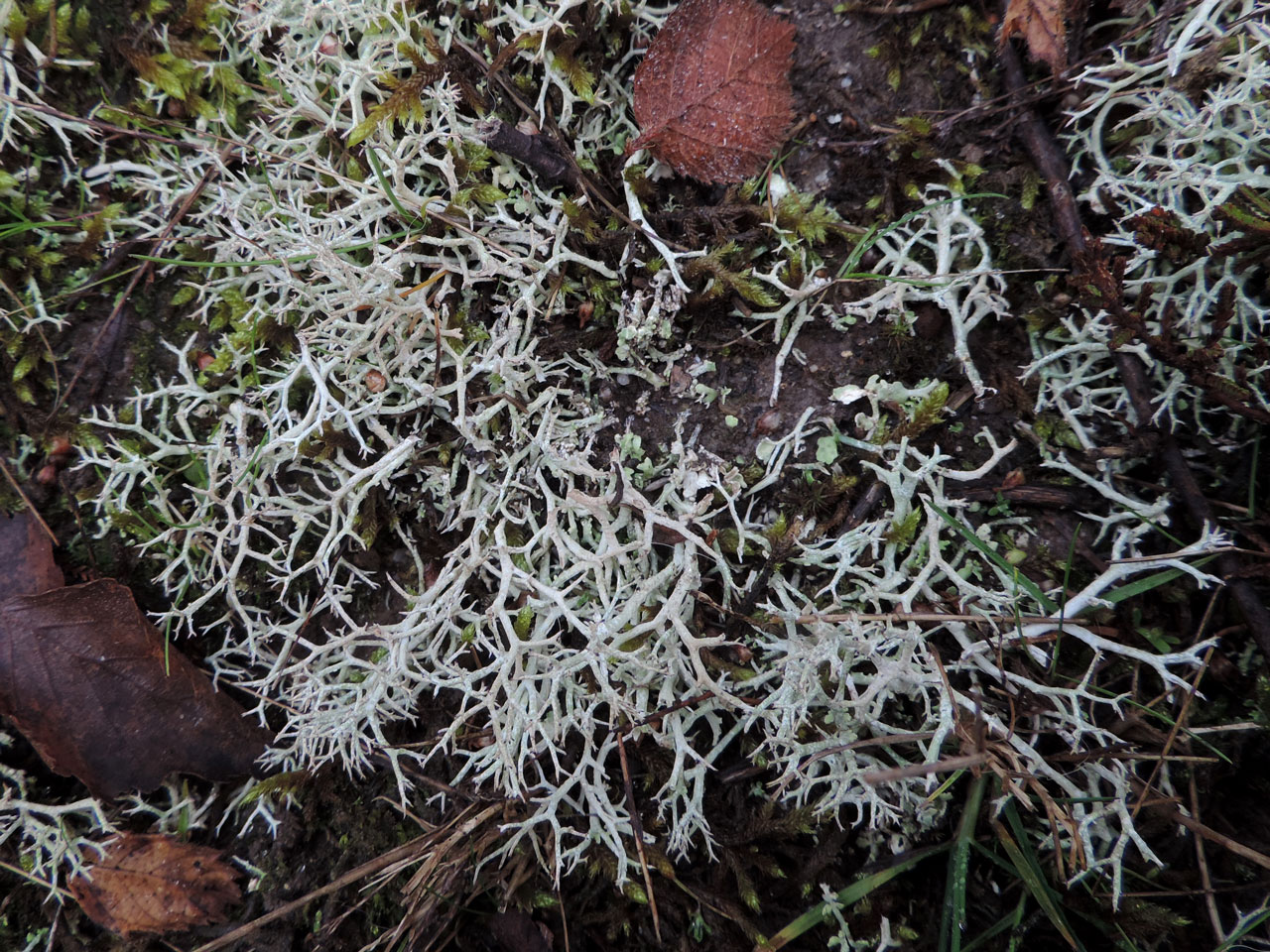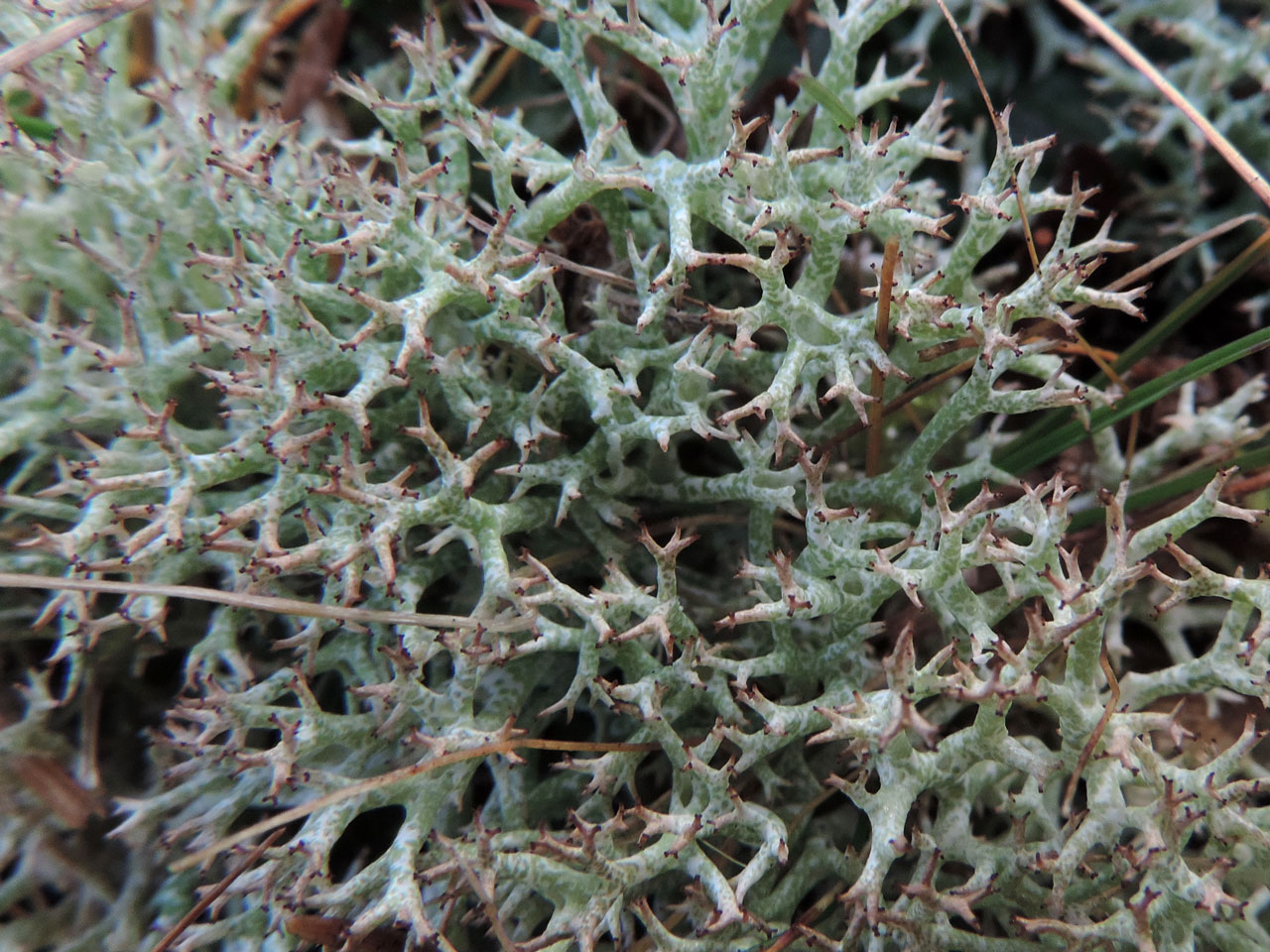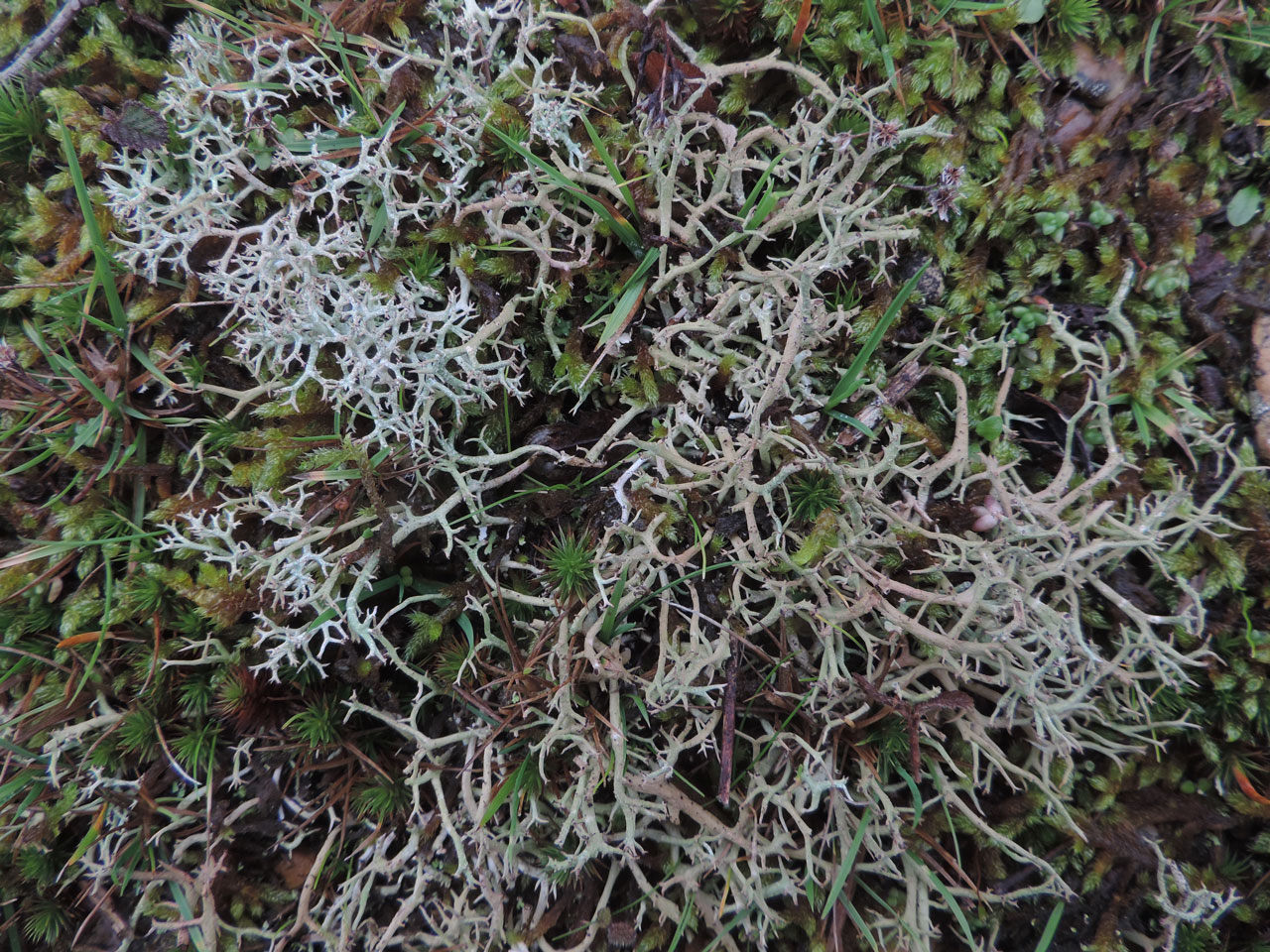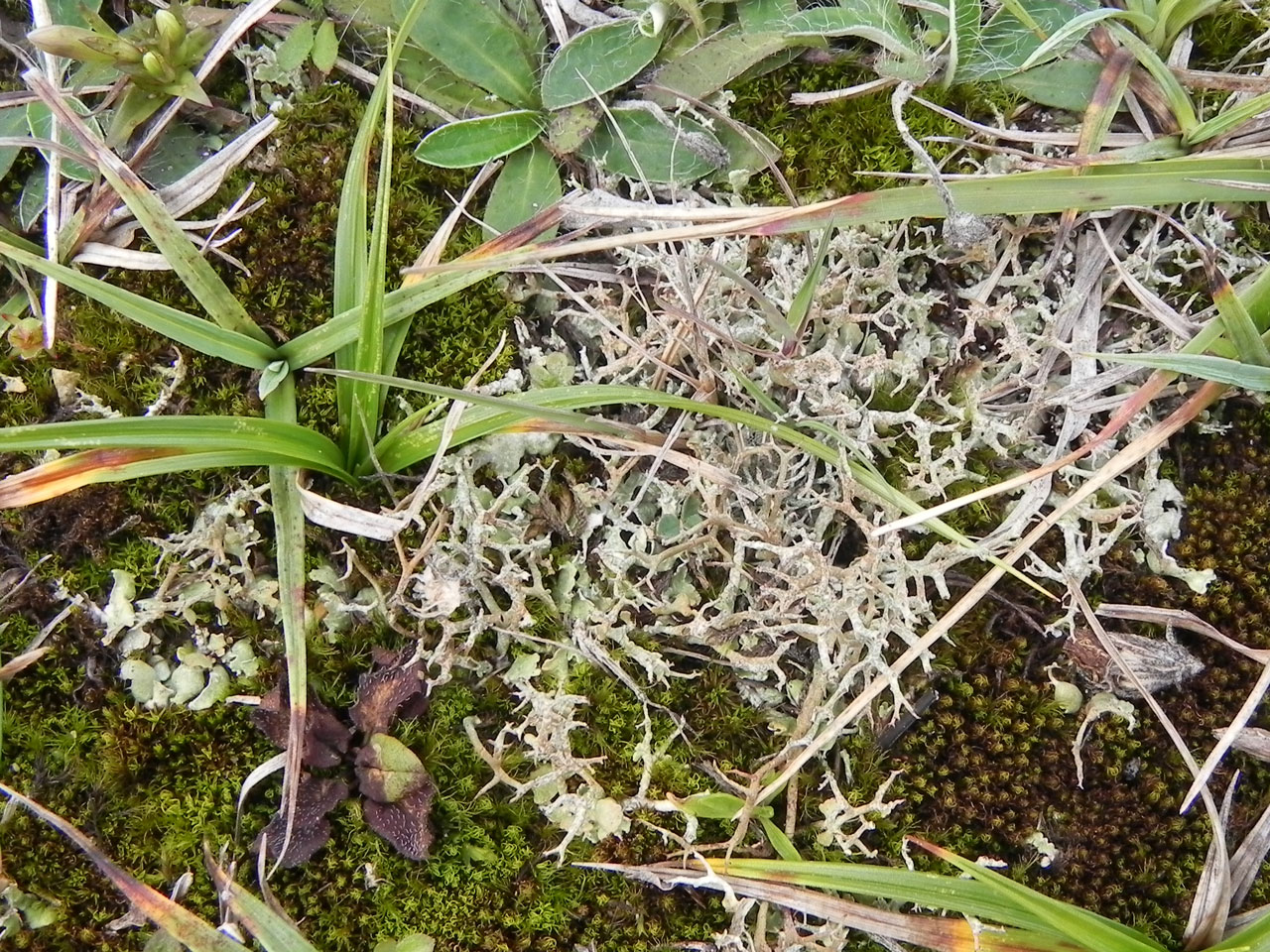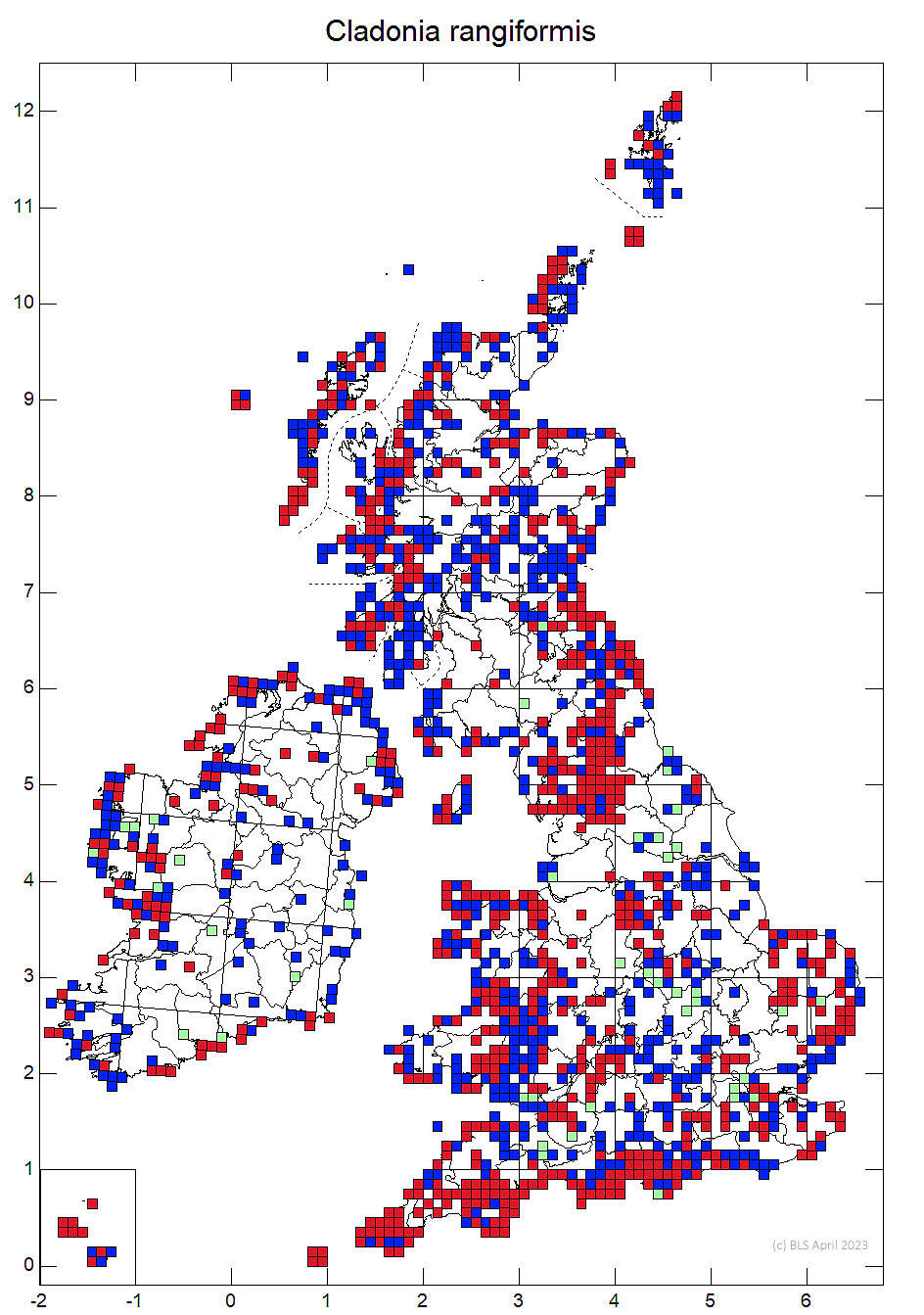Cladonia rangiformis
A False Reindeermosses, found in more base rich dry grassland, which can closely resemble the true Reindeermosses and the other False Reindeermoss, Cladonia furcata. Cladonia rangiformis is best separated from C. furcata by its more richly branched thallus, with the branches diverging at wider angles, forming spiky tufts. Where the basal squamules are lost, Cladonia rangiformis can closely resemble some forms of Cladonia portentosa or Cladonia ciliata. These best separated by the cortex surface, which is finely felted with visible hyphae in Cladonia portentosa or Cladonia ciliata but smooth in C. rangiformis.
Podetia 2–6 cm tall, grey-white to grey-green, to brownish in sunny areas, richly branched, the branches diverging at wide angles, forming spiky tufts with pointed apices, without cups, axils usually closed; upper surface corticate, distinctly mottled-areolate (×20 lens); attached squamules rather rare; soredia usually absent [a rare sorediate morph has been reported as C. rangiformis var. sorediophora (Nyl.) Vain. 1887; it has similar chemistry to the type variety]. Basal squamules evanescent, small; lower surface white, pale grey-green on top. Apothecia very rare, brown, at the apices of podetia, sometimes ± corymbose but never split. Pycnidia brown, at the apices of branches, frequent. Thallus C–, K+ pale yellow, KC–, Pd– (in ca 70% of collections) or Pd+ red, UV– (usually with atranorin and rangiformic acid, more rarely with fumarprotocetraric acid).
An unusual species with an evanescent thallus and richly branched podetia with a corticate surface. It is not closely related to the Reindeermosses, the species formerly included in Cladonia subgenus Cladina. Characterised by the richly branched thallus, the widely divergent branches with pointed apices and the K+ yellow reaction. The surface of older parts is distinctly mottled with green areolate patches of algae on a white background. C. furcata is often darker or more brownish, the surface not usually so obviously areolate (crazy-paving effect, best seen when wet), has fewer, less divergent branches and is K–. The branching difference is key and separates forms of C. furcata with strongly developed crazy-paving effect, which are not unusual.
Cladonia rangiformis can closely resemble Cladonia portentosa or Cladonia ciliata, especially where the squamules have disappeared on C. rangiformis. The latter are best separated by the cortex surface, which is finely felted with visible hyphae in Cladonia portentosa or Cladonia ciliata but smooth in C. rangiformis. Chemistry differences will also help, C. rangiformis is never UV+ and the majority of thalli are Pd–.
On neutral or basic dry grassland, chalk-flint grassland, cliffs and dunes, especially along the coast; often common.

Throughout Britain and Ireland, particularly in lowland habitats, but scarce in predominantly acid soils areas. Cladonia rangiformis var. sorediophora has been reported from Somerset and N.E. Scotland.
Pino-Bodas, R., Sanderson, N., Cannon, P., Aptroot, A., Coppins, B., Orange, A. & Simkin, J. (2021). Lecanorales: Cladoniaceae, including the genera Cladonia, Pilophorus and Pycnothelia. Revisions of British and Irish Lichens 19: 1-45. Link
